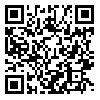BibTeX | RIS | EndNote | Medlars | ProCite | Reference Manager | RefWorks
Send citation to:
URL: http://ijdld.tums.ac.ir/article-1-304-en.html
Background: Chronic diabetes is substantially associated with circulatory disorders in lower limbs. Vacuum-Compression Therapy (VCT) has been commonly used in treatment of peripheral circulatory disorders. VCT is based on intermittent alteration of Positive- Negative pressure phases. The purpose of this study was to determine effects of VCT on diabetic subjects' peripheral blood flow.
Methods: In this Before-After and case-series study, 18 type 2 diabetic subjects with diabetic neuropathy and/or peripheral vascular disease (PVD) completed the study. Subjects received 45 min of VCT for 10 sessions three times weekly. Blood flow (calf+foot) was measured via venous occlusion plethysmography.
Results: Among Variables of "Arterial Inflow", "Venous Outflow", "Venous Capacity", "Post-ischemic Reactive Hyperemia" and "Peak Flow of Reactive Hyperemia", only "Venous Outflow" significantly improved after 10 sessions treatment via VCT (P<0.05).
Conclusions: Arterial blood inflow, which was the most important determinant evaluated in this study, was not increased via VCT. Additional studies are required to investigate the effective VCT parameters and duration of each session and number of sessions, considering progressive and deteriorative natural history of diabetes.
Received: 2007/05/1 | Accepted: 2007/07/16 | Published: 2013/10/15
| Rights and permissions | |
 |
This work is licensed under a Creative Commons Attribution-NonCommercial 4.0 International License. |





